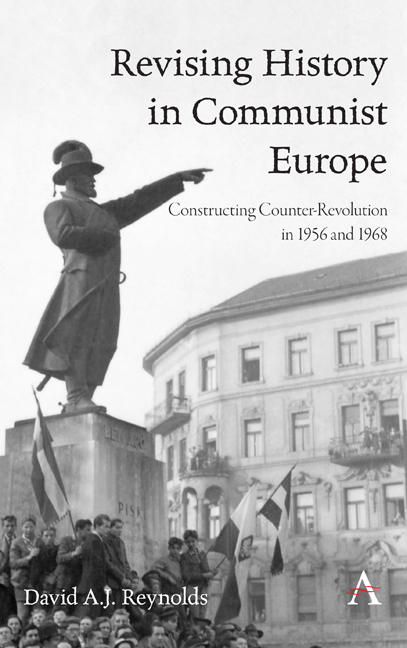Book contents
- Frontmatter
- Dedication
- Epigraph
- Contents
- Acknowledgements
- Introduction
- 1 The Export and Imposition of Stalinism
- 2 Hungarian De-Stalinization and Revising Recent History
- 3 A Revolution, a Counter-Revolution, or a National Uprising?
- 4 Stalinist Purges and De-Stalinization in Czechoslovakia
- 5 The Meaning of 1956 in 1968: March to June
- 6 June: Turning Point and the Hardening of Positions
- 7 July and August: Constructing Counter-Revolution
- 8 The Intentions of Intervention and the Shadow of 1956: Delusion and Failure
- Conclusion
- Epilogue
- Appendix
- Bibliography
- Index
7 - July and August: Constructing Counter-Revolution
Published online by Cambridge University Press: 16 February 2020
- Frontmatter
- Dedication
- Epigraph
- Contents
- Acknowledgements
- Introduction
- 1 The Export and Imposition of Stalinism
- 2 Hungarian De-Stalinization and Revising Recent History
- 3 A Revolution, a Counter-Revolution, or a National Uprising?
- 4 Stalinist Purges and De-Stalinization in Czechoslovakia
- 5 The Meaning of 1956 in 1968: March to June
- 6 June: Turning Point and the Hardening of Positions
- 7 July and August: Constructing Counter-Revolution
- 8 The Intentions of Intervention and the Shadow of 1956: Delusion and Failure
- Conclusion
- Epilogue
- Appendix
- Bibliography
- Index
Summary
The Soviets had now spent four months instructing both the Czechoslovak leadership and their Warsaw Pact allies that the counter-revolution was poised to pounce. Wielding supposed parallels between the build-up to the Hungarian uprising and the emerging situation in Czechoslovakia (particularly the emboldened critiques from the Petőfi Circle and the flurry of alternative political platforms in the Prague press), Brezhnev had repeatedly maintained that without a check and a reversal of the Czechoslovak manifestations of Hungary's path to counter-revolution, the catastrophe which enveloped Hungary would inevitably be repeated. As we have seen, this served as a warning, and it assumed that the KSČ could and indeed would implement the correctives that Moscow demanded.
But warnings are necessarily temporary things. An endlessly repeated warning eventually becomes merely empty rhetoric. Despite the Soviet insistence that the crisis in Prague was growing ever worse, increasing the ‘need’ and possibility of greater Soviet interference, the nature of the evidence for the Soviet case had not changed, even if its volume had. Brezhnev's dossier of concerning and even ‘counter-revolutionary’ press clippings bulged ever thicker, but when would the ‘inevitable’ transition to open counter-revolution occur if this was indeed a parallel situation to Hungary's 1956? Hungarian, Soviet, Czechoslovak, and other communist bloc propaganda had sought to make it clear in 1956 that the Soviet military intervention had been justified by nothing less than counter-revolutionary violence of the most brutal and shocking kind. It was one thing for Brezhnev to hint to Dubček, as he did in May, that the Soviets would be prepared to act pre-emptively to prevent a recurrence of such scenes, but it was another thing to turn this warning into a consistent and effective case for intervention. The fact is that the excesses and exaggerations of previous communist propaganda had created a rod for the back of the Soviets in 1968. They had set the bar prohibitively high for what counter-revolutionary activities looked like in the post-war Soviet bloc and, implicitly therefore, also publicly set the bar equally high for legitimate causes of an armed Soviet response. Yugoslavia and Albania had already slipped peacefully out of Moscow's grasp, and Romania seemed to be following. Meanwhile, in Prague and across Czechoslovakia, nothing remotely reminded observers of the scenes of organized armed resistance on the streets of Hungary in October and November 1956.
- Type
- Chapter
- Information
- Revising History in Communist EuropeConstructing Counter-Revolution in 1956 and 1968, pp. 153 - 180Publisher: Anthem PressPrint publication year: 2020



